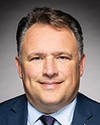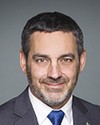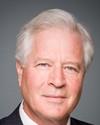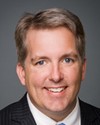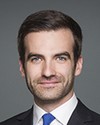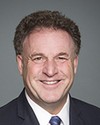Thank you, Mr. Chair. It's a pleasure to appear before you today as you embark upon this study.
As you've heard, the protocol requirements of the government for state visits, funerals, and other events are served by the protocol offices at the Department of Canadian Heritage and the Department of Foreign Affairs and International Trade. The protocol requirements for the Parliament of Canada are the responsibility of the office of parliamentary protocol, headed by Elizabeth Rody, within the international and interparliamentary affairs directorate of the Parliament of Canada, and that's headed by Eric Janse.
I would like to take a few minutes to provide the committee with an overview of the role and mandate of the Protocol Office, our role in the events you're considering, and the differences between federal government protocol and parliamentary protocol.
The Office of Parliamentary Protocol is part of the International and Interparliamentary Affairs Directorate of the Parliament of Canada. IIA is the only joint service of Parliament reporting through both clerks to the internal economy committees of both the Senate and the House of Commons.
The chief of protocol reports to the director general of International and Interparliamentary Affairs, Clerk Assistant, Eric Janse, who is on my right. The protocol team is led by the Chief of Protocol for Parliament, Elizabeth Rody, who is on my left.
The office of parliamentary protocol assists the speakers of both Houses in their diplomatic and ceremonial roles, supports parliamentary exchanges and parliamentary associations, organizes parliamentary conferences, and lends expertise and advice on all matters of protocol. This also extends to activities outside of Ottawa, and a good example of this is parliamentary delegations visiting various regions of Canada. A timely example is the work being done for the upcoming 127th Assembly of the Inter-Parliamentary Union, to be hosted by the Parliament of Canada in Quebec City in October 2012.
The office is also involved as a partner in the delivery of government-sponsored activities that take place in the Parliament Buildings.
Parliamentary protocol ensures that official visits and events for foreign parliamentarians and dignitaries are properly identified, organized, and acted upon; that all visits and events on Parliament Hill are conducted in a manner that befits the dignity and stature of the Parliament of Canada; that visiting dignitaries receive all the diplomatic courtesies in accordance with international protocol practices; that dignitaries, while visiting Parliament, receive a positive image and understanding of the institution; and that guidelines and procedures for parliamentary protocol are developed and maintained based on precedents and knowledge of the institution.
In certain cases the role of the Parliamentary Protocol Office in assisting government visits and events can be minimal, for example in the case of the Prime Minister simply meeting in his Centre Block office a counterpart from another country. In many other cases, however, our involvement is much more significant.
The vast majority of visits by heads of state, heads of government, or other high-level events occur on Parliament Hill or have a large parliamentary component. The resources required to successfully deliver these activities are not insignificant and they touch on a number of services at the House of Commons and in the Parliament—for example, security services, maintenance, room allocation to name but a few.
Examples of protocol events held on Parliament Hill are welcoming ceremonies of foreign heads of state and government or other high level parliamentarians and international dignitaries; addresses to Parliament; welcoming ceremonies; openings of Parliament; investitures of Governors General; unveiling ceremonies and parliamentary legacy projects, including portraits and windows; state funerals; and commemorations of national events.
To successfully execute the above mentioned activities, the office of parliamentary protocol partners and collaborates with foreign affairs protocol, state ceremonial at the Department of Canadian Heritage, provincial or territorial offices of protocol, and other government agencies, for example, the Department of National Defence. A recent example of that is Operation MOBILE in Libya and the ceremony to salute that effort.
As a specific example, the overall responsibility for a state funeral lies with the Department of Canadian Heritage. However, when the lying-in-state occurs on Parliament Hill, and it almost invariably does, we play a key role in arranging logistics, greeting VIPs, developing scenarios, coordinating security, and so on.
One of the key challenges is assisting with such events while respecting the fact that Centre Block is a working building with a specific legislative purpose. This challenge was referred to by Speaker Scheer in a recent ruling.
I quote the decision of Speaker Scheer:
As we all know, the parliamentary precinct and its buildings exist primarily to support the functions of the legislative branch. The Centre Block in particular, housing as it does the House of Commons and Senate chambers, is a working building where parliamentary proceedings are carried out and where members must be free to perform their duties without interference even when other activities are taking place. Needless to say, these heritage buildings, especially Centre Block, are also ideal venues for all sorts of events and we are all proud to showcase them for our distinguished visitors. However, when activities, such as the visit of the Prime Minister of Israel on March 2 take place, extra care is needed to ensure that competing requirements regarding the use of the buildings and precinct are understood, with due accommodations and with the proper balance.
Different protocol practices are applied when an event is deemed parliamentary in nature or is deemed a state or national event. The parliamentary Protocol Office executes events regularly on Parliament Hill that bring together the executive and the legislative branches, and it ensures that both protocols are incorporated to avoid offence and misunderstandings.
Our protocol office adds the parliamentary components, precedents and practices to events hosted by the executive on Parliament Hill, such as the official welcome of dignitaries by the speakers or the role of party leaders during an address to Parliament. The federal order of precedence does not reflect the composition of the House of Commons—I'm thinking of party standings, for instance—or the leadership role exercised by some members of the House of Commons. For parliamentary events, where the role of the speakers, party leaders, House leaders and whips must be taken into account, party standings will determine precedence and not the federal order of precedence. Thus, for example, seating arrangements for a dinner hosted by the Governor General or the Prime Minister will be different than those for a hospitality event hosted by the Speaker.
Protocol requires flexibility, common sense, and is negotiated between the different parties involved in crafting an event. Many principles need to be considered when scripting an event: the role of the hosts, the nature of the institution, and the objectives and desired results. Protocol is more art than science. A review of the organization behind the lying in state of the late leader of the New Democratic Party demonstrates that well.
All parties involved—the executive, the legislative, the province, and the City of Toronto—applied and incorporated in their scenarios their particular protocol, the nature of their institutions, but most importantly the wishes of the family, while respecting the overall protocol for state funerals as dictated by the Department of Canadian Heritage.
That is basically the overview of how we fit into things as the office of parliamentary protocol.
I thank committee members for their attention. We will be pleased to answer any questions members may have.

